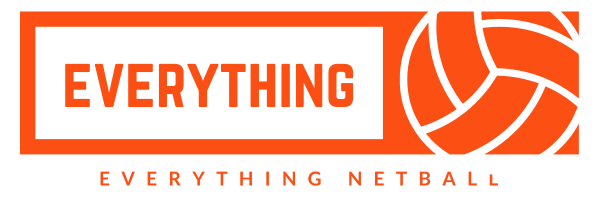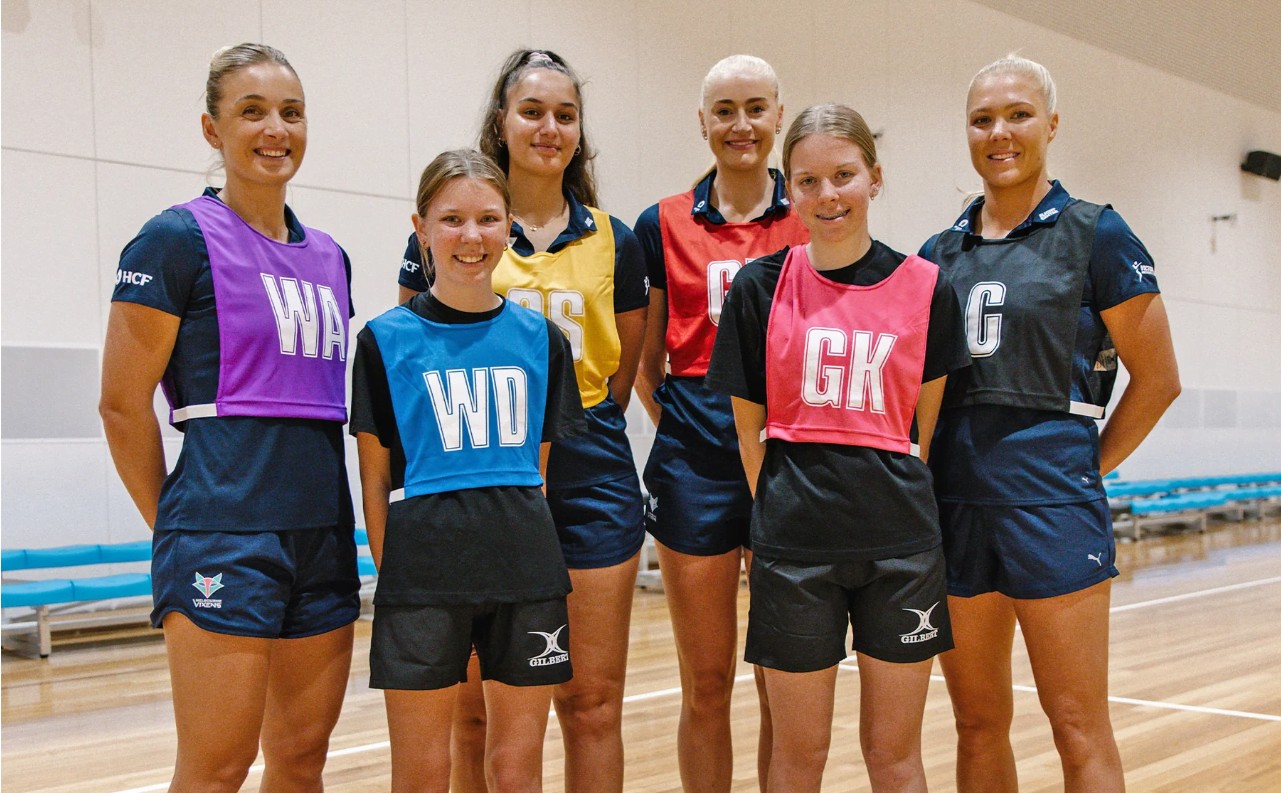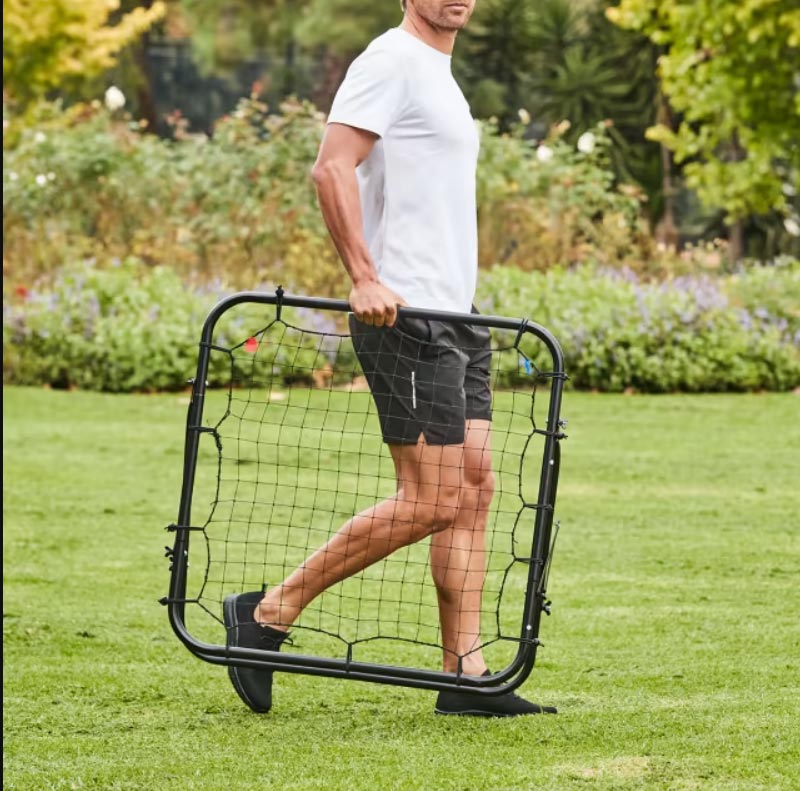Netball is a popular sport that requires specific equipment to ensure a safe and enjoyable playing experience. This article aims to provide a comprehensive checklist of netball equipment, covering essential and optional items.
The essential netball equipment includes a ball and goal, with proper attire (netball shoes!) and a flat surface being important for player safety.
Optional equipment such as knee or ankle braces/guards and support gear can enhance stability on the court.
Netball Balls
Netball balls are an essential piece of equipment in the sport and come in different sizes. Size 4 balls are used for junior players aged 8-10, while size 5 balls are used for players older than 10. This provides options for players of different age groups to participate in the sport.
Netball Posts and Rings
Posts and rings are essential components of the netball court, providing the structure and target for players to aim for during the game. Netball posts are available in different types, including fixed, portable, and adjustable. Fixed posts are permanently installed, while portable posts can be moved and stored easily. Adjustable posts allow for changing the height to accommodate players of different ages and skill levels. When choosing the right netball post height, it is important to consider the age and skill level of the players. The standard height for professional play is 3.05 m, while junior level posts are set at 244 m. Proper maintenance and care of netball rings are necessary to ensure their longevity. Regular inspections should be conducted to check for any signs of damage or wear. In addition, netball post accessories and attachments, such as padding and protective covers, can be used to enhance player safety and prevent injuries.
| Types of Netball Rings | Features |
|---|---|
| Standard Rings | Made of thick steel rods, with an internal diameter of 15 inches and extends 6 inches from the posts. |
| Adjustable Rings | Allow for changing the height to accommodate players of different ages and skill levels. |
| Junior Rings | Smaller in size and height, designed for younger players. |
| Padded Rings | Equipped with sponge padding for added safety and protection. |
Table: Types of Netball Rings and their Features.
Netball Court
The expansive wooden court (indoor) or concrete/asphalt (outdoor), measuring 30.5 meters in length and 15.25 meters in width, provides a spacious and professional setting for the fast-paced and strategic game of netball. The netball court dimensions adhere to standardised measurements, ensuring fair gameplay and consistency across matches.
Constructed with a solid surface, the court is designed to withstand the vigorous movements of players. Regular maintenance is crucial to keep the court in optimal condition, including cleaning, repairing any damages, and repainting lines. Safety precautions must be taken, such as ensuring a flat and safe surface to prevent injuries. Netball court accessories, such as padding or safety mats, can also be implemented to enhance player safety.
Overall, the netball court serves as the foundation for competitive and enjoyable gameplay.
- Netball court dimensions: 30.5 meters (length) x 15.25 meters (width)
- Netball court construction: Solid wooden surface or Concrete / Asphalt
- Netball court maintenance: Cleaning, repairing, repainting lines
- Netball court safety: Flat and safe surface, padding or safety mats
- Netball court accessories: Padding or safety mats
Netball Bibs
Netball bibs are an essential component of a player’s uniform, providing clear identification of positions and aiding in the smooth running of the game. These bibs are typically worn throughout the match and help umpires and teammates identify different positions on the court.
Not only do they assist players in distinguishing their teammates’ roles, but they also allow spectators to easily identify and follow the game. Netball bibs play a crucial role in netball drills, training, and strategies as they facilitate effective communication and coordination among players.
During training sessions, bibs with position markings help players understand their specific roles and responsibilities. Additionally, these bibs are particularly useful in implementing various netball strategies that require specific positioning and movement on the court.
Netball bibs are indispensable in promoting organisation, teamwork, and efficient gameplay.
Umpire Whistle
Umpire whistles are crucial tools in netball games, serving as a means of signaling and communicating important decisions or calls throughout the match. The importance of the umpire whistle cannot be overstated, as it ensures that the game is fair, organised, and efficient. It allows the umpire to stop play, signal fouls or violations, and indicate the start or end of a period or game.
Proper technique for using the whistle is essential to ensure that the signals are clear and easily understood by players, coaches, and spectators. The umpire should hold the whistle close to their mouth and blow a sharp, distinct sound. Different types of umpire whistles are available, including squeeze whistles and electronic whistles, each with its own unique sound and design.
The role of the umpire in netball games is to enforce the rules, make impartial decisions, and ensure the safety and fairness of the game. Umpires use various signals to indicate different situations or calls, such as raising a hand to signal a penalty or blowing the whistle multiple times to indicate a stoppage in play. These signals and their meanings are standardised to ensure consistency and understanding among all participants.
Coaching Equipment
Coaching in netball requires a range of essential tools and resources to effectively train and develop players. Netball drills play a crucial role in skill enhancement and tactical understanding.
Coaches use various coaching strategies to improve player performance, such as focusing on individual skills, team building, and game strategies. Player development is a key aspect of coaching, and coaches must create a nurturing and supportive environment to foster growth and improvement.
Training equipment is also vital for coaches to facilitate effective training sessions. This includes items such as cones, agility ladders, and resistance bands to enhance speed, agility, and strength. Additionally, coaches may utilise video analysis software to provide feedback and analyse player performance.
Overall, having the right coaching equipment is essential for creating a successful and productive training environment in netball.
Scoresheet (and Pen)
The recording of scores and game statistics is a crucial aspect of maintaining accurate records and analyzing player performance in the sport of netball. It allows teams and coaches to keep track of the progress and outcomes of matches, as well as identify areas for improvement. In addition to scores, other important game statistics such as turnovers, interceptions, and shooting percentages are also recorded. A scoresheet is typically used to document these details during a netball game, most importantly the goals scored for each team. This sheet includes columns for recording the team names, player names, and their respective positions. It also includes rows for each quarter or period of the game, allowing for easy tracking of score changes and player substitutions. Fair play guidelines are often followed to ensure the accuracy and integrity of the scoring system.
First Aid Kit
In order to effectively address any potential injuries, it is crucial for Associations/Leagues/Clubs to possess a well-maintained First Aid Kit. This kit must be kept in a designated location, and all relevant personnel (such as court supervisors, umpires, and coaches) need to be aware of its placement and have unobstructed access to it.
Additionally, there should be a ready supply of ice, either in crushed bags or in the form of gel ice packs, which should be stored in a suitable container like an esky or refrigerator.
Essential emergency contact numbers, including those for Ambulance, Doctor, Physiotherapist, Health Clinic, and Police, along with an Emergency Procedure Plan, should be prominently displayed near the phone and within the First Aid Kit.
The specific contents of the First Aid Kit may vary based on factors such as the duration of the season, the financial resources of the Association/Club, the number of players/teams participating at the venue, and the level of competition. Provided below is a fundamental checklist for a first aid kit:
- Various lengths of crepe bandages
- Hypoallergenic adhesive tape
- Triangular bandages
- Assorted sizes of adhesive dressing strips
- Gauze swabs
- Combine dressing pads (10x10cm)
- Non-stick dressing pads (7.5x10cm)
- Sterile eye pad
- Alcohol swabs
- Stainless steel scissors (sharp/blunt) sized at 12.5cm
- Disposable gloves
- Stainless steel pointed splinter forceps (tweezers)
- Thermal blanket for shock situations
- Safety pins
- Notepad and permanent marker
- Sterile saline tubes/sachets
- Disposable resuscitation face shield
- Antiseptic skin swabs
- Anti-itch cream
- First aid booklet
Wrap up: Everything you need to play a game of Netball
In conclusion, having a scoresheet and pen is crucial for keeping track of the game’s progress and recording the scores accurately.
However, to play a game of Netball, there are several other essential elements to consider.
- Netball positions, such as goal shooter, goal attack, wing attack, center, wing defense, goal defense, and goal keeper, determine the roles and responsibilities of each player on the court.
- Netball drills help players improve their skills and techniques, such as passing, shooting, and defending.
- Understanding the netball game rules is essential to ensure fair play and maintain the integrity of the game.
- Netball team formation involves selecting the appropriate players for each position based on their strengths and abilities.
- Lastly, developing effective netball strategies is crucial for achieving success in the game by outsmarting opponents and maximising scoring opportunities.







